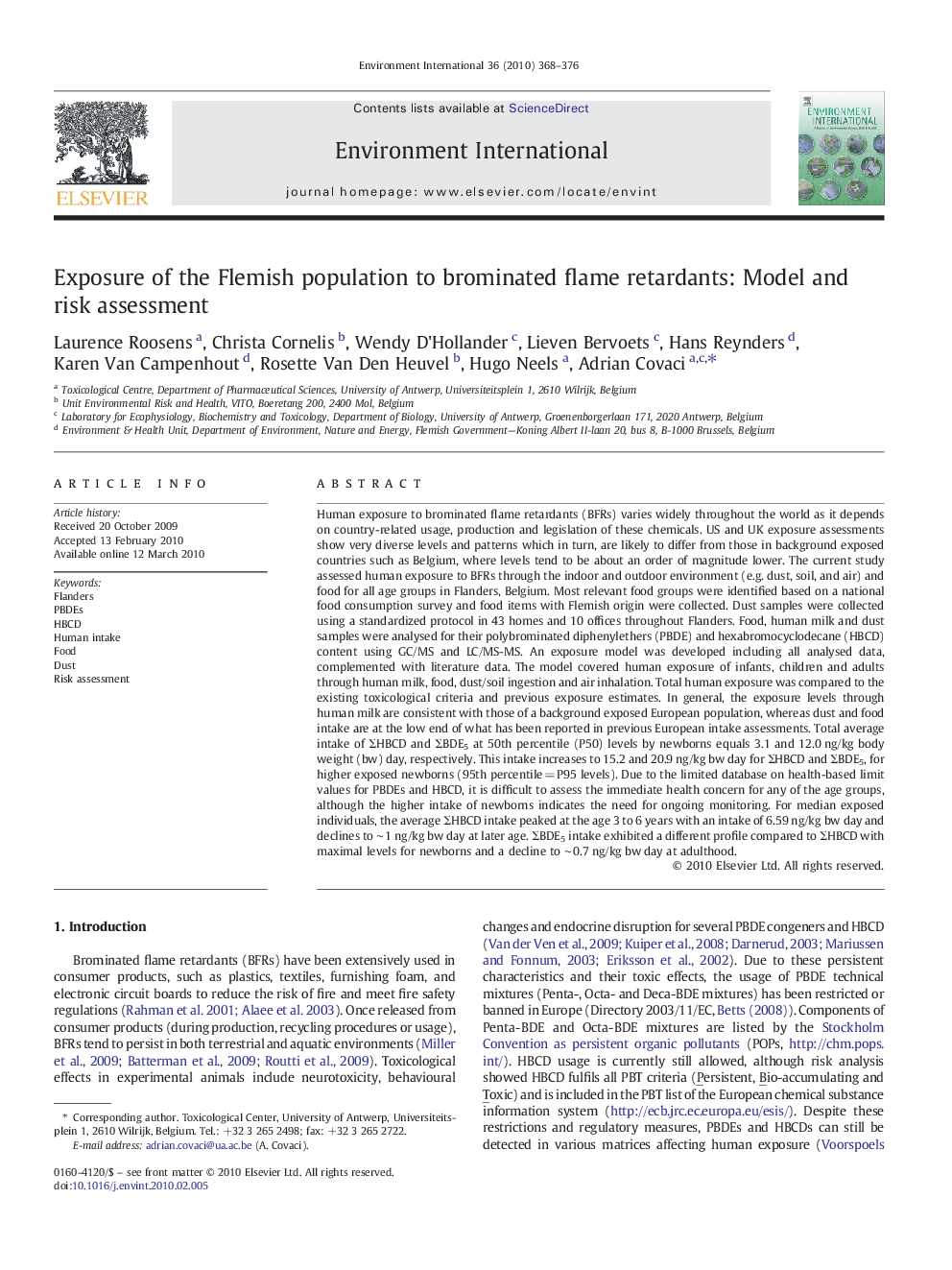| کد مقاله | کد نشریه | سال انتشار | مقاله انگلیسی | نسخه تمام متن |
|---|---|---|---|---|
| 4423477 | 1308827 | 2010 | 9 صفحه PDF | دانلود رایگان |

Human exposure to brominated flame retardants (BFRs) varies widely throughout the world as it depends on country-related usage, production and legislation of these chemicals. US and UK exposure assessments show very diverse levels and patterns which in turn, are likely to differ from those in background exposed countries such as Belgium, where levels tend to be about an order of magnitude lower. The current study assessed human exposure to BFRs through the indoor and outdoor environment (e.g. dust, soil, and air) and food for all age groups in Flanders, Belgium. Most relevant food groups were identified based on a national food consumption survey and food items with Flemish origin were collected. Dust samples were collected using a standardized protocol in 43 homes and 10 offices throughout Flanders. Food, human milk and dust samples were analysed for their polybrominated diphenylethers (PBDE) and hexabromocyclodecane (HBCD) content using GC/MS and LC/MS-MS. An exposure model was developed including all analysed data, complemented with literature data. The model covered human exposure of infants, children and adults through human milk, food, dust/soil ingestion and air inhalation. Total human exposure was compared to the existing toxicological criteria and previous exposure estimates. In general, the exposure levels through human milk are consistent with those of a background exposed European population, whereas dust and food intake are at the low end of what has been reported in previous European intake assessments. Total average intake of ΣHBCD and ΣBDE5 at 50th percentile (P50) levels by newborns equals 3.1 and 12.0 ng/kg body weight (bw) day, respectively. This intake increases to 15.2 and 20.9 ng/kg bw day for ΣHBCD and ΣBDE5, for higher exposed newborns (95th percentile = P95 levels). Due to the limited database on health-based limit values for PBDEs and HBCD, it is difficult to assess the immediate health concern for any of the age groups, although the higher intake of newborns indicates the need for ongoing monitoring. For median exposed individuals, the average ΣHBCD intake peaked at the age 3 to 6 years with an intake of 6.59 ng/kg bw day and declines to ∼ 1 ng/kg bw day at later age. ΣBDE5 intake exhibited a different profile compared to ΣHBCD with maximal levels for newborns and a decline to ∼ 0.7 ng/kg bw day at adulthood.
Journal: Environment International - Volume 36, Issue 4, May 2010, Pages 368–376